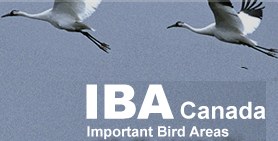The Scott Islands support the largest concentration of breeding seabirds in the eastern North Pacific south of Alaska, and are the most important breeding colonies for seabirds in British Columbia. Twelve species of seabirds breed in this group of islands, with virtually all the nesting occurring on Triangle, Sartine and Beresford Islands. Together these Islands support over two million breeding birds.Three of the seabird species nesting on the islands occur in globally significant numbers (i.e., greater than 1% of their population). These species are: Cassin?s Auklet (as much as 55% of the global, and 73% of the national population); Rhinoceros Auklet (as much as 7% of the global, 9% of the continental, and 12% of the national population); and Tufted Puffin (2% of the global, and almost 90% of the Canadian population). Other species that are present in at least nationally significant numbers (i.e., greater than 1% of the national population) include: Fork-tailed Storm-Petrel (1.5% of the Canadian population), Leach?s Storm-Petrel (2.3% of the western Canada population), Pelagic Cormorant (just over 1% of the North American, and 17.5% of the Canadian population), Brandt?s Cormorant (40% of the Canadian population) Black Oystercatcher (almost 3% of the Canadian population), Glaucous-winged Gull (about 4% of the national population), Common Murre (as much as 95% of the western Canada population) and Pigeon Guillemot (6% of the national population).
Other species of seabirds nesting on the islands include Thick-billed Murre (the only known site in Canada where the Pacific population nests) and Horned Puffin (less than 25 pairs in British Columbia). The marine areas surrounding the islands are important feeding areas for the nesting seabirds as well as other marine birds such as Sooty Shearwaters. Large numbers of migrating and wintering seaducks such as White-winged Scoters also frequent the area, particularly in the vicinity of Cox and Lanz islands.
Triangle Island supports several pairs of Peregrine Falcons (ssp. pealei ) a species considered nationally vulnerable. Peregrine Falcons are also recorded at each of the other four islands in the group and Bald Eagles nest throughout.


